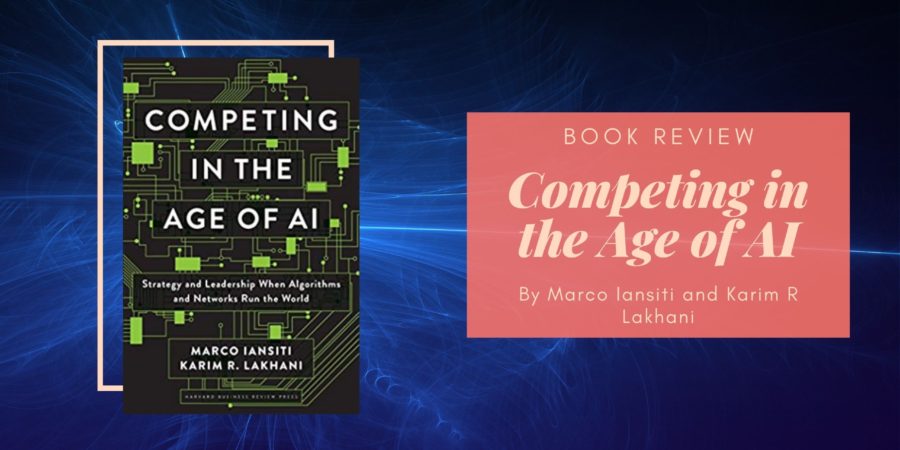Time to review another book on my MBA summer reading list! I studied a bit about IoT during my undergraduate days, so this book on artificial intelligence (AI) sounded very interesting.
Competing in the Age of AI is based on one premise: that “AI is becoming the universal engine of execution” and as such is “becoming the new operational foundation of business – the core of a company’s operating model, defining how the company drives the execution of tasks.” Because this is a fundamental shift in business operating models, the authors say that companies must learn how to adapt.
While I thought this book was a good refresher on the potential impact of AI on businesses, the book does seem a bit confused about who its target audience is. Some basic concepts, such as disintermediation caused by technology and the impact of network effects are explained in detail, but others, like what the authors mean by AI, are barely touched upon. Despite this being a book dedicated to artificial intelligence, the authors don’t spend more than a paragraph defining what they mean when they refer to AI. At the start of the book, they reference that weak AI (by which they mean AI that can “perform tasks that were traditional performed by human beings”) is enough to make a huge impact, but the book also refers to unsupervised and reinforcement learning, as well as using AI to make predictions, which sounds more like strong AI to me.
If this book is aimed at business people who are unfamiliar with the concept of AI and are likely to think of it as just another buzzword, it may have been beneficial for the book to spend some time explaining what they mean by AI. It would also help if the writers made a clearer distinction between AI and machine learning, because the two terms seem to be used almost interchangeably.
Putting aside the lack of clear definitions, I thought the middle sections of the book, on the AI factory, rearchitecting the firm, and becoming an AI company were interesting. The book looks at Amazon and Microsoft’s transformations to show how established firms could transform their businesses and why they might want to do so and I found those sections to be interesting.
And as you might imagine from the examples above, this book focuses on giant (often tech) companies. The only example I saw of AI being used on a smaller scale was when the authors created an AI factory to help map out lung cancer tumours from CT scans. But what about the applications of AI for smaller businesses, which may not have the capital to make large investments into technology or may not know if they are collecting enough data for AI to have an impact? It does feel like most AI/ML/IoT projects are focused on making big companies bigger, rather than helping smaller firms compete (the exception I have heard of is that Industrie 4.0 was originally meant to help SMEs, but when I was studying it, it hadn’t moved past the big firms either).
Overall, this is an interesting book and people who are looking at the business impact of recent technology developments will probably want to read this. Since Competing in the Age of AI was published in early 2020, most of the case studies are still relevant – I think the only thing I noticed was the absence of Jack Ma’s disappearance (and the implications of government interference in this area) from all discussions of Ant Financials and Alibaba.

This sounds like an interesting book and the cover is really cool! Just a pity that it’s not quite clearly laid out
Yeah!! I think it could have been very helpful if there were a few more tweaks – AI is one of those overused buzzwords that can mean almost anything so it’s hard to know exactly what’s being talked about without a clear definition.
Yes definitely! It’s so overused and so it just gets dropped into sentences without actually thinking about it